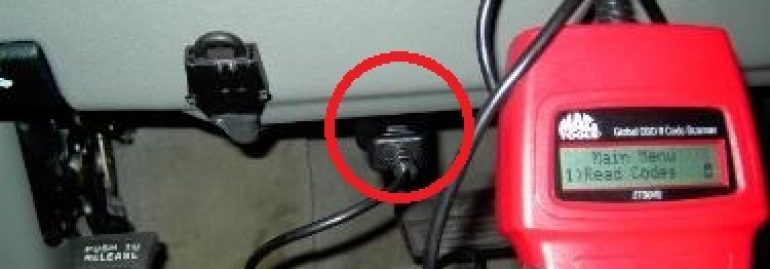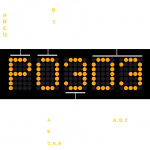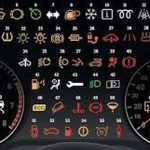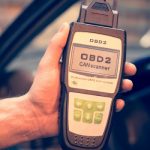A diagnostic trouble code (DTC) is a combination of 5 characters, one for each of the major system components in your car. This code can mean a few different things, and you can use the information to fix any problems that may arise. These codes are also known as manufacturer-specific or SAE codes. Here is an explanation of each. Read on for an easy-to-understand explanation. This article will cover both SAE and OBD-II codes.
OBD-II codes
OBD-II automotive computer codes are a vital part of any car’s diagnostic system, helping the mechanic determine the cause of malfunctions and the most effective ways to fix them. These codes are also known as Check Engine Light Codes or Diagnostic Trouble Codes. Understanding these codes is important not only for mechanics but for drivers. In this article, you’ll learn how to decipher them and get the most out of your car’s diagnostic system.
OBD-II automotive computer codes are divided into categories based on the type of problems they indicate. P-Powertrain codes refer to problems with the engine, transmission, fuel system, ignition, and emission controls. In addition, there are emission-related codes and B-Body codes. The last type, “Undefined,” is for problems with the airbags, body, brake fluid, axles, and other parts of the car that haven’t been properly calibrated.
Fortunately, OBD-II codes aren’t a mystery anymore. You can learn how to fix many of them by yourself. Check out videos produced by the nonda Auto DIY Center that demonstrate how to read the codes. It’s easier than ever to diagnose and repair your own car than you think! If you’d like to know more, click the link below. A good place to start is with the Manuals.
To read OBD-II automotive computer codes, you must know how to connect the scanner to the car’s OBD port. This port is typically located near the steering column, and it can also be under the glove box. Some readers will even be able to determine the meaning of the codes they show. Once you’ve plugged in the scanner, you’re ready to diagnose your car and get the most out of it.
Aftermarket parts manufacturers have continued to produce replacement parts for most vehicles, and they must be compatible with OBD II systems to avoid emissions violations. The only difference is that the latter can send the detected fault information to roadside receivers. This can eliminate the need to conduct emissions inspections and repair the vehicle’s problems. But if you’re looking for a performance-enhancing aftermarket part, you’ll need to get the necessary authorization from the CARB before you can buy it.
OBD-II is an automotive diagnostic system that allows mechanics to read and diagnose malfunctions in a car. It is widely used in Pay-As-You-Drive insurance and vehicle telematics. These codes can be interpreted by a mechanic to identify a problem before it becomes more severe. So, how do you interpret them? This article will provide you with an overview of OBD-II automotive computer codes.
OBD-II provides access to a vehicle’s engine control unit data, which is invaluable for troubleshooting. The SAE J1979 standard specifies how to request diagnostic data. The standard also lists a list of available parameters, called PIDs. Not all manufacturers implement all PIDs, and some may have proprietary PIDs. However, this doesn’t mean you can’t use OBD-II automotive computer codes.
Manufacturer-specific codes
If you have a car, you should know about OBD-II, the system used by manufacturers to diagnose and repair a vehicle’s problems. Using an obd-ii diagnostic tool can help you identify the exact problem your vehicle is having. The codes displayed are five-character long and provide different information. The most important information to look for is the trouble code freeze frame. A malfunctioning engine can indicate a serious problem, and this code can indicate an impending collision.
OBD-II systems are implemented by many manufacturers and are used for a variety of purposes, including vehicle telematics and Pay-As-You-Drive insurance. CAN protocol is commonly used in automotive applications, although it did not meet U.S. requirements prior to 2003. OBD-II systems are standardized by the International Organization for Standardization (ISO) and all new vehicles must implement the CAN signaling protocol.
Depending on your vehicle, you may encounter the need to use diagnostic tools to check for codes. The codes contain a letter prefix and four numeric digits. You should use a professional OBD2 software program or car code reader to check for the codes. While generic codes are universally accepted and commonly used, some manufacturers add their own codes. For example, P0 codes refer to the problem of the vehicle’s engine, while P1 codes are unique to a manufacturer.
In addition to universally-accepted DTCs, there are also manufacturer-specific automotive computer codes. These codes have a first digit of two or three. These codes are used to diagnose problems with your vehicle. Manufacturers have their own codes for certain parts of the car, including the engine. A manufacturer-specific code can help you diagnose a vehicle’s problems and determine which parts need repair. And a code that appears on the computer display can be useful when you’re trying to diagnose a problem.
On-board diagnostic systems have been installed on cars for many years, and they can help you pinpoint the specific problem with your car. When a code is displayed, a technician can read the information in the car’s memory and correct it. There are two main categories of these codes: B-codes and C-codes. B-codes refer to issues that occur in the passenger compartment, while C-codes pertain to the car’s outside functions.
Some PDTCs are ignored when the vehicle has been driven for at least 15 warm-up cycles, or if the car has been driven for 200 miles since the last time it cleared its OBD information. You can avoid PDTCs by following these guidelines. Fortunately, the following tips can help you identify the cause of your vehicle’s malfunction. When you’ve determined which code to look for, you can then take steps to address it.
OBD-II codes are often confusing. They don’t necessarily mean that your vehicle needs a specific part, but instead indicate a malfunctioning system that needs further diagnosis. Buying auto parts from an auto parts store may only make the problem worse. There are many times when an auto parts store will sell you a part based on the auto diagnostic code itself. Be careful not to fall for this trap. Some auto parts stores will try to sell you a part based on the OBD-II code alone.
SAE codes
Automotive computers communicate with vehicles using SAE codes for diagnostic purposes. These codes are defined in SAE J1979 and are required for all on-road vehicles in North America. Some vehicles support additional PIDs that are specific to their manufacturers. Most motorcycles also support OBD-II. But you should know what they mean before trying to diagnose problems on your own. If you’re not sure, keep reading to learn about the most commonly used codes and how they can be helpful.
A P0128 code means that the temperature of the engine coolant is below the thermostat regulating it. While it might seem like a confusing code, it’s actually a standardized code and can be interpreted using SAE definitions. It also indicates a possible problem with the fuel and air metering system. If this is the case, you’ll need to have it replaced. This code is found on older cars and may not be indicative of a major problem.
A vehicle’s engine and its electrical system may be sending a DTC. The DTC contains information about a malfunction, allowing you to isolate the problem and determine how to fix it. If you don’t know how to read DTCs, you can use a scanner to read the data. SAE J2012 defines a standardized list of DTCs and specifies which ranges are reserved for vehicle manufacturer specific usage.
The first digit of a trouble code identifies whether the code is manufacturer-specific or generic. A generic code has a “0” while a manufacturer-specific code starts with a P1. Moreover, a “1” indicates a generic powertrain problem, while a “P” code relates to a manufacturer-specific problem. It is not uncommon to see one of these codes on a diagnostic tool.
The last two digits of an SAE code define the actual fault. There are several types of automotive computer codes. Some are merely malfunction warnings while others are diagnostic faults. The codes themselves are difficult to read and interpret, so you’ll have to use the right tools to find them. It is always better to seek professional assistance before fixing a serious problem, such as an oil change. You’ll need to consult with your mechanic if you’re unsure what these codes mean.
Trouble codes are a type of diagnostic code used by the car’s on-board computer to identify a problem. The codes are standardized by the Society of Automotive Engineers (SAE International), which makes troubleshooting easier. Most of them fall into four main groups: powertrain (“P”) codes, transmission (M), and emissions systems. For each type of trouble code, there are specific troubleshooting tools available.
Basic code readers give you a five-character diagnostic code. However, more comprehensive solutions include complete codes with fault alerts. You’ll find these tools at your local car-parts store. These devices are more affordable than scanners, but they don’t provide as much functionality as a comprehensive diagnostic system. A code reader’s price range is a consideration as well. In addition, it’s not advisable to purchase a SAE code reader if you don’t want to spend the money.






Hi Alex
Is it possible to get some help on a obd project ( software) I am working on? We are having issue getting current and pending dtc’s. Works in our simulation.. but issues in the field